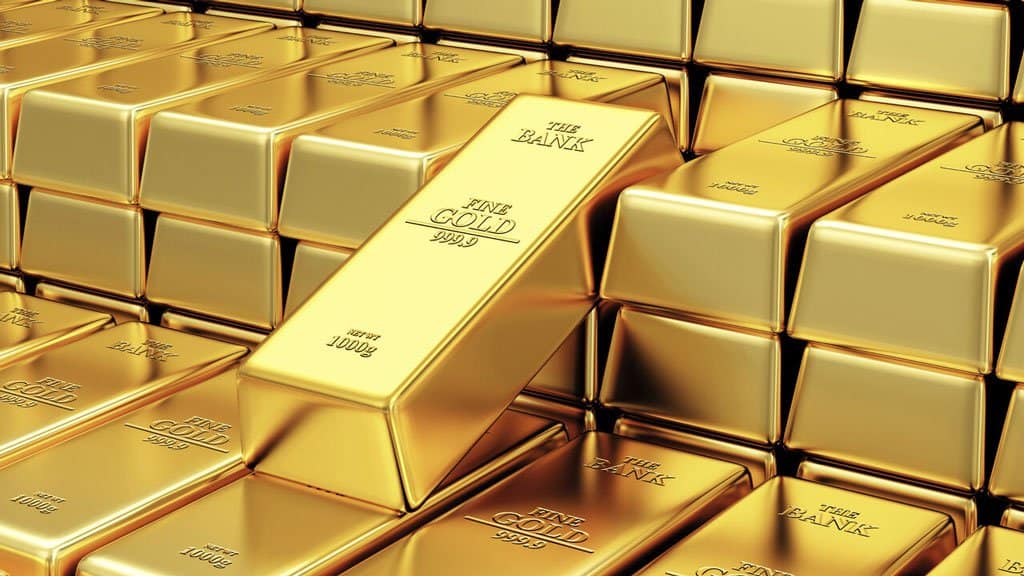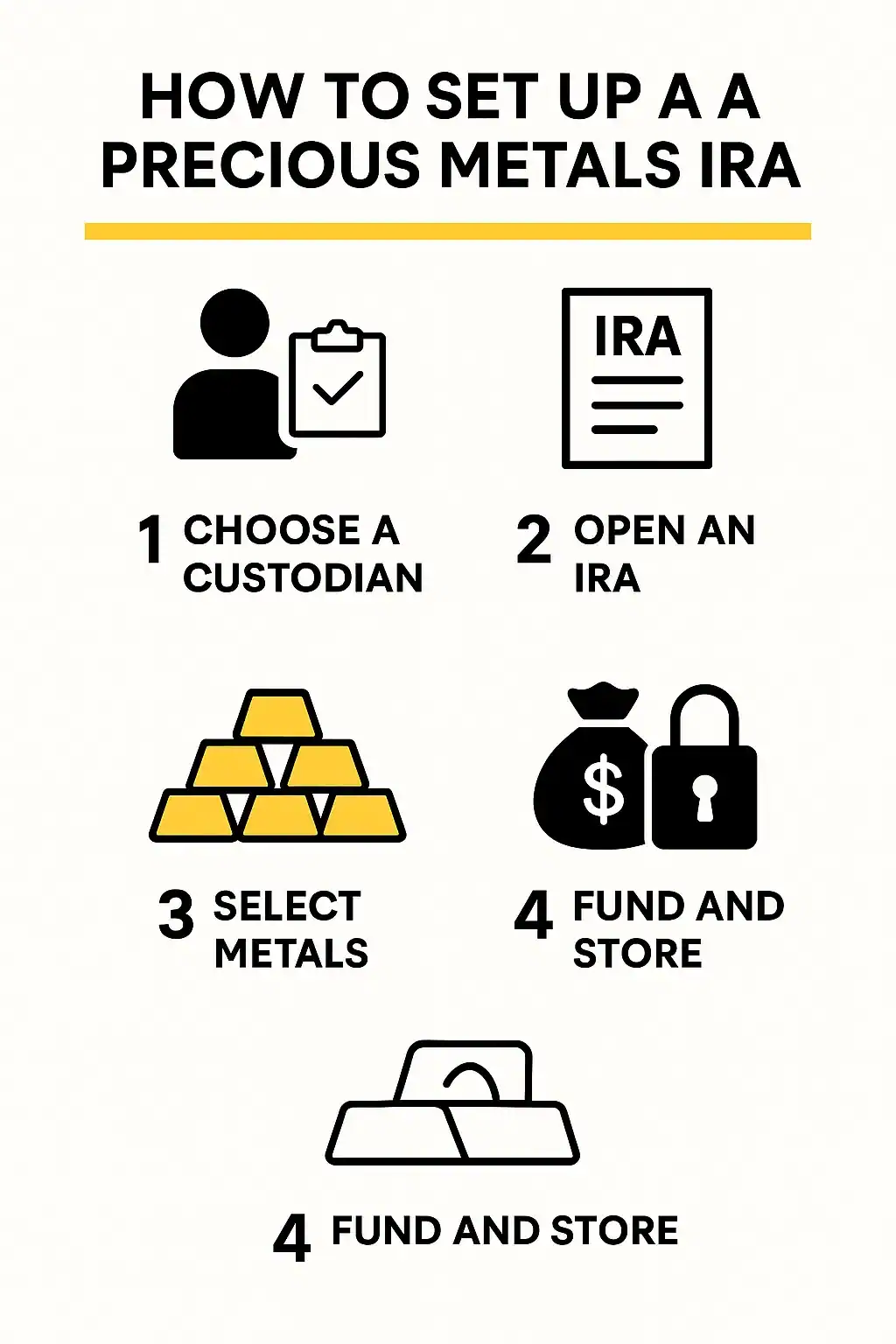Precious Metals IRA Reviews: How to Choose the Right Provider

Investing in precious metals through an IRA is not about chasing trends: It is a strategic decision aimed at protecting long-term value in times when traditional financial instruments face increasing pressure.
For readers already familiar with the fundamentals of gold and silver IRAs, the real challenge lies in identifying the providers who offer genuine reliability, transparency, and cost-efficiency over time.
As keep on repeating in our articles, this type of investment involves multiple parties, so it is really crucial to choose the right company that will help you during this process.
Not all custodians and dealers are created equal in this market. While many companies offer similar promises, the quality of service, fee structures, storage conditions, and overall credibility can vary widely.
This is why objective, detailed precious metals IRA reviews play a critical role in separating solid long-term options from marketing-driven offers.
Therefore, this article continues our in-depth series by analyzing how to assess IRA providers effectively. The goal is not just to present rankings, but to give investors the tools to recognize what really matters when allocating retirement capital to tangible assets like gold, silver, platinum, and palladium.

Key Takeaways:
- Precious Metals IRAs offer long-term portfolio protection through tangible assets that help hedge against inflation and currency devaluation.
- Only specific metals are IRS-approved for inclusion, and they must meet strict purity and origin criteria.
- Choosing the right custodian is essential, as it impacts compliance, security, fees, and long-term account performance.
- Detailed precious metals IRA reviews help investors avoid hidden costs and identify trustworthy providers offering the best value and storage solutions.
What Are Precious Metals IRAs and Why They Matter
A Precious Metals IRA accounts are structured to include tangible metals approved by the IRS for retirement purposes. Contrarily to traditional IRAs that use stock market products, these types of accounts will hold only precious metals.
The fundamental purpose of a Precious Metals IRA is to serve as a hedge against inflation and systemic risk. In fact, when the purchasing power of fiat currency declines, physical metals tend to preserve their value.
For investors concerned about protecting their retirement wealth in an increasingly unstable macroeconomic environment, these IRAs offer a form of insurance that traditional portfolios often lack.
Precious metals historically hold their values in times of crisis, so precious metals IRAs are a very good opportunity to protect a retirement investment.
Including physical metals in a retirement account can also enhance portfolio diversification.
In fact, precious metals do not move in direct correlation with equities or bonds, which can help reduce overall portfolio volatility. This non-correlation is especially valuable during downturns, when conventional markets tend to suffer across the board.
Establishing a Precious Metals IRA requires working with a qualified custodian. This custodian is responsible for handling the administrative process, ensuring IRS compliance, and coordinating the secure storage of metals through approved depositories.
Choosing the right provider is crucial, and this is where detailed precious metals IRA reviews become essential. They help investors evaluate which custodians and dealers offer real value, transparent pricing, and reliable long-term support.
Furthermore, this ensures that the metals are stored in secure, IRS-approved depositories and that all transactions comply with government regulations. The process may seem complex, but with the right guidance, it can be a smooth and rewarding addition to an investment strategy.
Top Precious Metals IRA Custodians Reviewed
Benefits of Investing in Precious Metals IRAs
- One of the most compelling reasons to consider a Precious Metals IRA is its ability to preserve purchasing power over time. While traditional currencies consistently lose value due to inflationary pressures, precious metals, especially gold and silver, have historically maintained their worth across centuries.
In fact, their intrinsic value does not depend on central bank policies or fiscal stimulus. For investors looking to build retirement wealth that will hold its real value, this feature alone sets precious metals apart from conventional paper-based assets.
- Another important benefit is the diversification these assets bring to a retirement portfolio. Stocks, bonds, and mutual funds are all tied to broader market performance and can become highly correlated during financial downturns.
In contrast, physical metals often respond differently to macroeconomic shifts. Their performance during crises tends to be countercyclical, offering stability when other asset classes experience volatility. Including precious metals within an IRA structure adds a layer of balance that helps mitigate overall portfolio risk.
- Security is another factor that cannot be overlooked. Digital assets can be compromised, and even paper investments are vulnerable to institutional failure or fraud. Physical precious metals are immune to cyberattacks, database errors, or digital manipulation.
Held in IRS-approved depositories, these tangible assets are protected by strict regulatory standards and full insurance coverage. For investors who prioritize the safety of their retirement funds, this level of protection is not only reassuring but essential.
- Finally, the enduring value of precious metals is supported by historical precedent. Gold and silver have played a central role in global economies for thousands of years. Unlike speculative instruments or trend-based assets, they are not dependent on short-term narratives or market sentiment.
As long as inflation, debt cycles, and geopolitical instability remain part of the financial landscape, precious metals will continue to serve as a reliable cornerstone in a retirement strategy.
Types of Precious Metals Eligible for IRAs
Not all precious metals qualify for inclusion in a retirement account. The IRS sets strict criteria regarding purity, origin, and form to ensure that only specific types of physical bullion can be held within a self-directed IRA.
The four metals allowed—gold, silver, platinum, and palladium—must meet minimum fineness requirements and be sourced from approved mints or refineries.
Gold remains the most frequently chosen metal for IRA purposes. Its reputation as a safe haven asset is supported by centuries of use as a global store of value. To be eligible for inclusion in an IRA, gold must have a minimum purity of 99.5 percent. Qualifying products typically include coins like the American Gold Eagle and Canadian Gold Maple Leaf, as well as gold bars from IRS-approved refiners. Gold’s relative stability and strong performance during economic uncertainty have made it the foundation of many long-term precious metals strategies.

Silver is also widely used within IRAs and is appreciated for both its affordability and its role in industrial production. The IRS requires silver to be at least 99.9 percent pure. Common options include the American Silver Eagle, the Canadian Silver Maple Leaf, and investment-grade bars.
Due to its lower cost per ounce, silver appeals to investors who want to gradually build a diversified metals position without making large initial capital commitments. Its dual role as a monetary and industrial metal can also introduce unique upside potential.
Platinum and palladium, while less common in retirement portfolios, offer additional diversification benefits. Platinum must meet a minimum purity of 99.95 percent, while palladium must be at least 99.5 percent pure. These metals are heavily used in sectors like automotive manufacturing and clean energy technologies, making their prices more sensitive to global industrial trends.
For investors interested in broader exposure to the metals market, incorporating a portion of platinum or palladium can expand the IRA’s reach beyond traditional allocations.
Understanding the technical and regulatory requirements for each metal is essential when evaluating custodians and storage providers. A proper review of your options ensures that each holding is compliant, liquid, and aligned with your long-term objectives.
This is where detailed precious metals IRA reviews, like this one, can offer valuable insight and help investors avoid costly mistakes.
How to Set Up a Precious Metals IRA
Establishing a Precious Metals IRA requires careful planning but can be a seamless process when supported by an experienced custodian. The first step is to identify a company authorized to manage self-directed IRAs that include physical metals.
It is essential to work with a custodian that not only meets all regulatory requirements but also has a strong reputation for transparency, responsiveness, and industry experience. This partner will oversee all administrative tasks, ensure IRS compliance, and coordinate storage logistics.
Once the custodian has been selected, the next phase is to open the IRA itself. This can be done either by creating a new self-directed IRA from scratch or by rolling over funds from an existing retirement account, such as a traditional IRA, Roth IRA, or 401(k).

The rollover process must be executed properly to avoid tax consequences or penalties, which is why detailed guidance from the custodian is vital at this stage. Most companies provide dedicated support teams to handle documentation and transfers with minimal disruption.
After the account is funded, the investor can choose which metals to purchase. This selection must align with IRS guidelines regarding purity and origin. Approved options include gold, silver, platinum, and palladium in specific forms such as government-minted coins or investment-grade bars.
Investors typically receive a list of eligible products, and they can make decisions based on personal preferences, market conditions, or diversification goals.
Once the purchase is made, the custodian arranges secure transportation of the metals to an IRS-approved depository. These facilities meet stringent requirements for security and insurance, ensuring that the assets are stored safely and remain compliant.
At this point, the Precious Metals IRA is fully operational and can be monitored like any other retirement account. Investors receive regular statements and can adjust their holdings over time, in accordance with market trends or strategic objectives.
For those considering this path, consulting up-to-date precious metals IRA reviews can help identify the most efficient and trustworthy custodians, making the setup process faster and more reliable.
Fees and Costs Associated with Precious Metals IRAs

When evaluating a Precious Metals IRA, understanding the full cost structure is critical. While the intrinsic value of physical metals is a major advantage, the fees involved can significantly impact long-term performance if not carefully managed.
These accounts come with distinct categories of costs that vary by provider, and transparency is key to making informed decisions.
The first cost to consider is the account setup fee. This is a one-time administrative charge applied when the IRA is first opened. Depending on the custodian, this fee can range from under one hundred dollars to several hundred.
Some firms may waive this fee for larger initial deposits or during promotional periods, so it is worth asking about available discounts before finalizing the agreement.
Ongoing maintenance fees are another core expense. These cover account servicing, reporting, compliance, and customer support. Some custodians charge a flat annual fee, while others use a percentage-based model tied to the total value of the account.
Investors should review not only the amount, but also what is included in the service. Some providers bundle in features like online access, regular reporting, or educational support.
Storage fees are mandatory, since the IRS requires all physical metals in a retirement account to be stored in a qualified depository. These can be charged as a flat annual fee or based on the market value or weight of the metals.
Another distinction is between commingled and segregated storage. With commingled storage, metals are pooled with those of other clients, whereas segregated storage ensures your holdings are kept separately under your name. The latter often comes at a premium but offers greater clarity and control.
Transaction fees apply when metals are purchased or sold within the IRA. These can include markups on the sale price, shipping or handling charges, and occasional administrative costs. It is advisable to compare pricing structures across multiple custodians and dealers. Detailed precious metals IRA reviews often highlight hidden costs that may not be evident at first glance, helping investors avoid overpaying for basic services.
Comparing Precious Metals IRAs to Traditional IRAs
For many investors, the choice between a Precious Metals IRA and a Traditional IRA comes down to risk tolerance, investment philosophy, and long-term goals. Both account types offer tax advantages, but they differ substantially in asset composition and in how they respond to market conditions.
- Traditional IRAs are typically composed of stocks, bonds, ETFs, and mutual funds. These paper-based assets offer strong growth potential, but are also vulnerable to systemic risk. Their performance is closely tied to the broader financial markets, and during recessions or market corrections, their value can decline sharply. While diversification within these accounts is possible, it is limited to financial instruments that often behave similarly under pressure.
- A Precious Metals IRA introduces a physical, tangible component to retirement planning. Gold and silver, in particular, have historically acted as a hedge during times of currency devaluation, inflation, or market instability. Unlike equities, metals do not generate earnings or dividends, but they hold intrinsic value and are not dependent on corporate performance or economic policy. This makes them attractive to those seeking preservation of capital rather than aggressive growth.
Diversification is another key distinction. Precious Metals IRAs offer exposure to assets that move independently of stocks and bonds. Adding gold, silver, platinum, or palladium can reduce the portfolio’s overall volatility and act as a stabilizing factor in times of financial uncertainty. However, metals come with their own set of risks.
Their prices can fluctuate based on global demand, mining output, and shifts in industrial usage. Additionally, investors must account for storage logistics and insurance, which are not factors in traditional accounts.
The best approach often involves a blend of both structures. A core portfolio built on conventional investments can be complemented by a smaller allocation to metals within a self-directed IRA. This layered strategy balances growth and preservation, offering both upside potential and downside protection.
Conclusion: Building a Resilient Retirement Strategy Through Precious Metals IRAs
Investing through a Precious Metals IRA is not about following a trend. It is a deliberate, strategic choice aimed at reinforcing the long-term stability of your retirement plan. In a financial system where market cycles, inflation, and currency risk are constant variables, tangible assets like gold and silver offer a level of resilience that paper instruments alone cannot provide.
But the effectiveness of this approach depends on clarity and precision. Selecting a reliable custodian, understanding fee structures, and choosing IRS-approved metals are not details to overlook—they are the foundation of a compliant, efficient, and secure investment. It is not just about holding precious metals, but about doing so with structure, intention, and full awareness of the mechanics behind the account.
Every investor's goals are different. Some prioritize capital preservation, others seek insulation from market shocks, and many are looking for diversification that goes beyond conventional models. A Precious Metals IRA can serve each of these purposes—when it is designed with care and guided by accurate information.
The landscape of retirement investing is becoming more complex, not less. Regulations evolve. Markets shift. Products proliferate. Staying informed is no longer optional—it is what separates reactive investing from responsible wealth management. High-quality precious metals IRA reviews, clear due diligence, and a proactive mindset are essential tools in that process.
At BestGoldMoney, we believe that knowledge is leverage. The more you understand the structure, benefits, and limitations of your retirement vehicles, the more equipped you are to protect what you have built. Don't forget to take a look at our blog, in which you can find more articles concerning this topic.